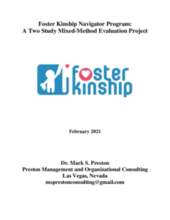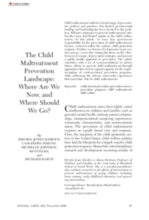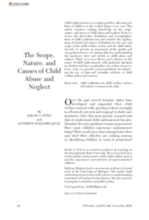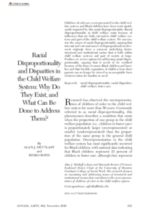Displaying 321 - 330 of 2176
This systematic narrative review of the literature reports on the experiences of foster youth regarding the use of Internet Communication Technologies (ICTs) such as social media, focusing only on studies that include youth voice.
This study examined racial/ethnic disparities in reunification rates across U.S. child welfare systems controlling for child- and system-factors.
U.S. President Joe Biden has signed three executive orders "to rectify the consequences" of the previous "zero tolerance" immigration policy, including "establishing a task force designed to reunite families separated at the US-Mexico border," according to this article from CNN.
This qualitative evaluation was to determine the level of fidelity of Clark County Nevada’s Foster Kinship navigator program to its navigator program manual and to ascertain if Foster Kinship’s navigator program for formal kinship families met the minimum standard for promising practice.
This report offers a blueprint for creating equity-centered, anti-racist policies that support the health and well-being of children and families of color.
This study examined the effectiveness of a two-session preventive parenting intervention, the Parent Check-In. The intervention, grounded in Self-Determination Theory (SDT), is designed to facilitate adaptive parenting, specifically autonomy support, structure and involvement, and parenting efficacy, and to increase autonomous self-regulation and decrease behavior problems in children.
This article from the Washington Post tells the stories of families who were separated at the U.S. border with Mexico due to the U.S. "zero tolerance policy," then reunited, and then separated again by Immigration and Customs Enforcement.
In this article, the authors trace how government responsibility for the prevention of child maltreatment became centered within the U.S. child protection response.
This article examines existing knowledge on the scope, nature, and causes of child abuse and neglect in the U.S.
This article summarizes the causes of racial disproportionality, arguing that internal and external causes of disproportional involvement originate from a common underlying factor: structural and institutional racism that is both within child welfare systems and part of society at large.





